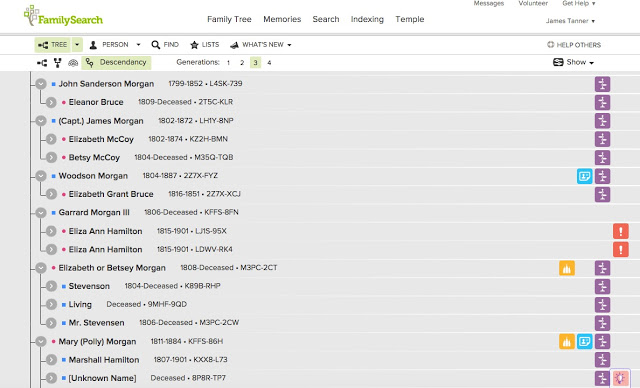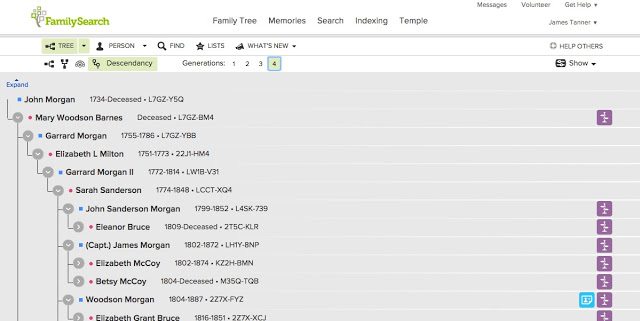Cautions in Using Family Tree
Some potential issues to be aware of when using the FamilySearch Family Tree
I have looked at thousands of family trees over the years. The vast majority of them share a common malady: at some point in the pedigree the information makes a sharp departure from reality and enters the genealogical Twilight Zone. Many genealogists who inhabit this shadow world are so caught up in it that they believe every link in their pedigree to be the one absolutely true family tree. They cannot conceive of the fact that they ever departed from reality.
This departure from reality usually occurs at a point where there are no supporting sources for the information listed for a specific family in any given line. This is easily demonstrated from the unified FamilySearch Family Tree. This is not a fault with the function of the Family Tree, but a reflection of the combined nature of the data. In essence, the Family Tree is a conglomeration of over 100 years of user-compiled data. However, the good news is that sources are being added to the Family Tree in huge numbers. Where the sources end, fantasy begins.
Many of the newer family history programs and apps rely on the data from the Family Tree. Because of this fact, many people are using programs that produce unreliable data because the ancestry given by the Family Tree is not always verifiable and is very likely inaccurate. I have only verified my own lines back six generations. I am still verifying and sourcing the descendants of those six generations and that work is far from over. I do not have to go very far before finding long lists of relatives with no supporting source information.
In the following screenshot from the Family Tree of part of my family the purple icons indicate individuals with no sources. The red exclamation point icons indicate serious problems with the data.

You can also see, if you look closely, that there are unresolved duplicates. I might add that presently these duplicates cannot be resolved and will not be resolved until the New.FamilySearch program is completely separated from the Family Tree.
The disjointed data is more insidious that obvious. If I go back another generation with this same family, we see the following:

At this level, there appears to be some documentation, at least the icons showing no sources are missing except for the wife of the ancestor John Morgan. But an examination of the tree shows that this particular John Morgan has no specific source listings connecting him to Garrard Morgan or supporting a birth or death date. From where did he come? As a matter of note, this particular line goes back into the 900s. From my standpoint, it ends right here and may even end one or two generations more recent.
This is what I mean by the end of reality: pedigree lines that have no sources to substantiate the names included. Pedigrees going back to Adam are only the most blatant examples. Any given pedigree might end at the parents of the first person listed without sources.
What is interesting is that the participants in the Family Tree are gradually documenting all of their ancestral connections. This documentation is slowly but surely extending back to each of these points where reality disappears. As the documentation continues to be added the places that are not documented will become more and more obvious. Many of them will likely be resolved, others will finally be put to bed and retired from the Family Tree. Over time the Family Tree will inevitably become more and more accurate.
But the caution I am presenting is that the Family Tree has many of these departures from reality and the users need to be careful about placing too much reliance on the data until the sources are found and entered.
Written by James L. Tanner. Used with permission.
Need help finding more records? We have genealogy research services available. You can also try our genealogical records directory which has more than 1.3 million sources to help you more easily locate the available records.
Related Topics
- Learning Genealogy Articles more than 140 helpful articles to help you to do genealogy more effectively
- How to Use FamilySearch Family Tree Effectively Why it's important to add sources
- How to Stop People from Making Incorrect Changes in Family Tree Tips for keeping the correct information on your family in the Family Tree
- The Different Views in FamilySearch Family Tree The traditional, portrait, fan chart, and descendancy views in Family Tree